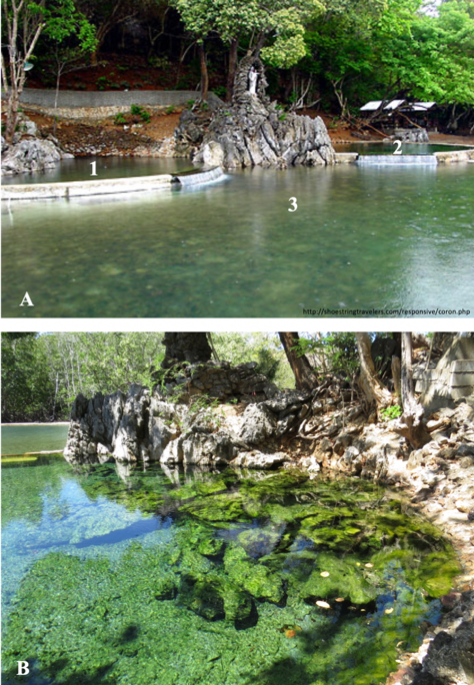VOLUME 12 (Supplement)

Philipp. Sci. Lett. 2019 12 (Supplement) 011-032
available online: July 17, 2019
*Corresponding author
Email Address: mmartinezgoss@gmail.com
Date Received: February 12, 2019
Date Revised: May 11, 2019
Date Accepted: May 21, 2019
ARTICLE
Cyanobacteria and diatoms in the cyanobacterial mats in a natural salt water hot spring in Coron, Palawan, Philippines
Jean Edward B. Manlapas1, and
Eldrin DLR Arguelles3
University of the Philippines, Los Baños, Laguna, Philippines
2Museum of Natural History
3Philippine National Collection of Microorganisms,
National Institute of Molecular Biology and Biotechnology
University of the Philippines, Los Baños, Philippines
The Maquinit Hot Spring in Coron, Palawan, Philippines is one of the few salt water (35-40 ppt) hot springs (38°C-41°C) in the world. It is one of two of its kind in Southeast Asia. This unique habitat was studied intermittently over a period of 12 years. It is the first study of the taxonomy of the thermo-tolerant cyanobacteria in cyanobacterial mats and their associated diatoms. A total of 18 taxa are reported and identified. Included herewith are 11 species of cyanobacteria (Division Cyanobacteria) and seven species of diatoms (Division Bacillariophyta) that were dominant and significantly observed. There were five homocystous filamentous cyanobacteria, one heterocystous type, and five species in the coccoid and colonial forms. The diatoms were mostly the benthic and marine types. Of these taxa, the following are new records for the country: three species in Division Cyanobacteria (Pleurocapsa minor, Myxosarcina amethystina, and Calothrix thermalis) and two taxa in Division Bacillariophyta (Achnanthes brevipes var. intermedia and Halamphora coffeaeformis). While eight species are new distributional records in the Philippines. Keys are presented to differentiate the different species in Cyanobacteria and in Bacillariophyta. Diagnostic descriptions, photographs, distribution, and habitat records are given for each taxon.
© 2025 SciEnggJ
Philippine-American Academy of Science and Engineering